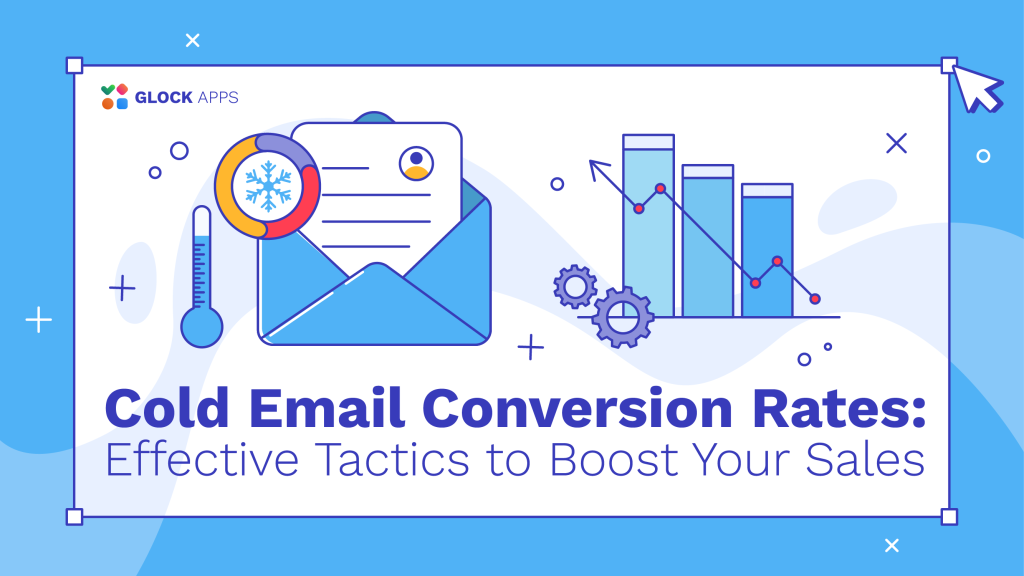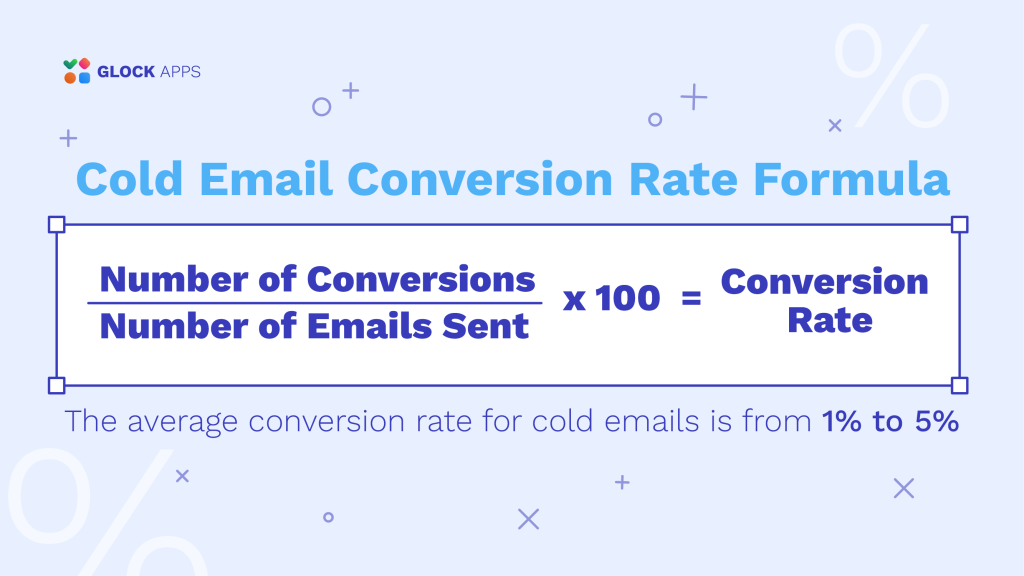Cold Email Conversion Rates: Effective Tactics to Boost Your Sales

Table of contents
Is It Hard to Create Cold Emails That Convert?
Cold emails are considered one of the best channels for direct outreach and lead generation, especially in industries where building relationships with potential customers is critical. They help companies target specific individuals or organizations that fit their ideal customer profile. Therefore, by making a targeted approach, they increase the probability of reaching future clients who are most likely to be interested in the product or service offered by the business.
But the one thing is to encourage the readers to open the letter, and another to try to get them to the finish line and engage with your offer. This process can hardly be called easy, so before you start creating your campaign, check out our article, which will cover all possible ins and outs of cold email conversion.
Do Cold Emails Convert Well?
Making the first move to strangers is not easy, but how can we make it effective? You obviously need to work on the quality of your emails to increase your cold email engagement.
You may have come across many good cold email statistics showing that they are working well, and that’s true, but the ultimate measure of success and effectiveness of a cold email campaign lies in achieving the goal, namely conversion.
So when we talk about conversion, we mean that your cold email inspired people to take some action that matches the goals of your sending campaign, like making a purchase, signing up for a service, registering for a webinar, visiting a website, filling out a form, downloading an item, or scheduling a demo call.
But how is that success measured? And how do you know if you’re on the right track in your strategy?
What Is the Cold Email Conversion Rate?
A cold email conversion rate is a metric used to measure the effectiveness of cold email campaigns in generating desired actions or responses from recipients.
It is calculated by dividing the number of desired conversions by the total number of cold emails you sent and then multiplying by 100 to get the percentage result.
Let’s consider a particular case:
The total number of sent cold letters is 756
The number of conversions is 27
Cold email conversion rate = (27/756) x 100 = 3.57%

Consider this example, here the conversion rate of 3.57% means that out of every 100 cold letters sent, about 3-4 recipients made the desired action, moved further down the sales funnel, taking a meaningful step toward becoming a client. But is this indicator good?
What Is a Good Conversion Rate for Cold Emails?
The average conversion rate for cold email campaigns differs depending on various factors, such as industry, target audience, email list relevance, effectiveness of content, deliverability metrics, compliance with main laws, and above all, quality of the offer.
Nevertheless, a rough estimate is that the typical conversion rate for cold emails in many industries ranges from 1% to 5%. But this is a fairly general range and actual conversion rates can vary significantly. In addition, there are industries in which even a lower conversion rate is observed, which is considered a normal situation. A cold email conversion rate below 1% is generally regarded as low, indicating a poor level of desired action from recipients.
Going back to our example, while a conversion rate of 3.57% may seem low at first glance, it is completely within the norm. That’s why even a small increase in conversion rate should be your top priority when creating a cold email. A higher conversion rate means a bigger customer base, increased brand awareness, overall growth, and boosted profitability of your business.
So, how do you increase your cold email conversion rate? Simply follow the tips below to make sure you get the action you want every time you are cold mailing to a prospect.
How to Write Cold Emails That Convert?
As you can see, the art of crafting cold emails that convert takes skill. But with a few simple and effective techniques, you can achieve good results. Here’s how you can do it:
1. Segment Your Prospects List.
Segmentation plays a key role in increasing conversion rates in B2B marketing strategies. Don’t email everyone in a row, unless your customers have unique preferences. Use different customer personas depending on your business to increase conversions. Constantly update your mailing list by adding new and removing inactive subscribers.
By segmenting your target audience by various criteria, such as industry, company size, geographic location, job title, age, interests, lifestyle, devices, and behavior, you can tailor your cold emails to the specific needs of each group. Read more about segmentation in our comprehensive blog post. This method increases engagement and conversion because it allows you to make more targeted and relevant offers, ensuring that your communications resonate with recipients and encourage action.
2. Identify Your Qualified Leads.
Once you’ve segmented your audience as much as possible, begin the process of qualifying your lead in each segment. This involves evaluating individual leads in the context of their segment to determine their suitability as leads based on criteria such as interest level, budget, credentials, and fit with your ideal customer profile.
Qualifying prospects is essential to making your marketing initiatives as effective as possible. By carefully selecting leads, companies can focus their resources on engaging with those most likely to become clients, thereby increasing efficiency and ROI.
3. Personalize Your Emails.
Today, a one-size-fits-all approach to email simply won’t work. Moreover, research shows that personalized messages work much better than general ones. Frame your messages as if you were talking to each recipient one-on-one, using their name, title, pain points, and interests whenever it is possible to connect with them.
Delve into the nuances of their industry, study their needs, and seek out all the information you need to make your approach personal and valuable. Instead of a generic opening like “Hello” try writing “Hello [Recipient Name]”, and that’s just at the initial level. Today, hyper-personalization is called the most effective way for brands to communicate with customers, because it allows you to send contextual emails at the optimal time as an act of targeting the product. So, taking the time to research and being personal can do miracles with your conversion rate.
4. Make Your Cold Email Content Relevant and Concise.
Evaluate your email content in detail, from the subject line, and body copy, to the call to action. Do your best to make your message concise, focused, compelling, and attractive.
Prospects are looking for solutions that directly address their personal needs, so choose the subject line of your cold email to reflect this, which means direct and clear. Don’t forget to add a clear call to action at the end, because your copy can be great, but without clear instructions on what to do next, the reader will simply close it and that’s it. Do you want recipients to book a demo call? Let them know about it as clearly as possible with a powerful CTA.
5. Keep Track of Email Deliverability.
Once your best content is ready, send your emails to qualified leads from the list. Keep in mind important factors such as timing, sending frequency, and deliverability to ensure that your letters reach your audience’s inboxes on time.
Deliverability seed list testing is critical for cold email campaigns, as it shows how many emails end up in recipients’ inboxes and how many go to spam. Unsolicited bulk emails can have a significant impact on deliverability, as they risk activating spam filters if not done properly. Failure to test consistently and send a large number of emails can lead to lower rates as email service providers may mark such emails as spam.
Be sure to perform regular deliverability testing so you can catch problems early and fix them as soon as possible before they affect performance. A bad sender IP and domain reputation reduces the potential for your emails to get noticed, obviously resulting in a lower conversion rate.
Avoid issues with our Inbox Insight tool, create an account, and get 2 free tests to easily track your cold email campaigns. We recommend automating deliverability checking of your cold outreach with Automatic Tests. Monitor the performance of your multiple domains and mailboxes, make significant fixes, and switch them timely with our auto alerts when the situation worsens.
Summing Up
To increase the conversion rate in your cold email marketing, take the time to segment and qualify your prospects who are interested in your business. Use this information to craft your emails in a way that attracts more people to your sales funnel.
By following our tips and focusing on creating high-quality, engaging content and testing the deliverability of your emails, you will surely convince your audience to act and significantly boost your conversion rates.



